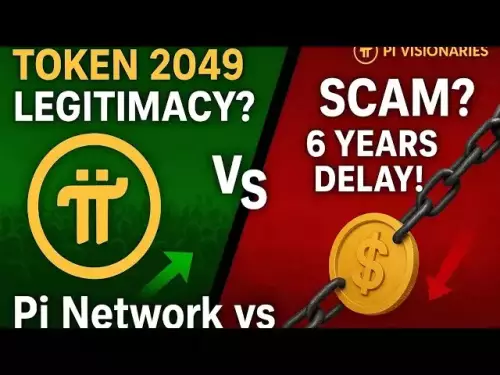-
 bitcoin
bitcoin $114779.865156 USD
2.30% -
 ethereum
ethereum $4226.519789 USD
2.39% -
 tether
tether $1.000545 USD
0.04% -
 xrp
xrp $2.890223 USD
0.92% -
 bnb
bnb $1030.029301 USD
2.95% -
 solana
solana $212.824944 USD
1.69% -
 usd-coin
usd-coin $0.999757 USD
0.01% -
 dogecoin
dogecoin $0.234961 USD
-0.27% -
 tron
tron $0.337174 USD
0.42% -
 cardano
cardano $0.804783 USD
0.09% -
 hyperliquid
hyperliquid $45.748770 USD
-2.85% -
 chainlink
chainlink $21.699170 USD
0.82% -
 ethena-usde
ethena-usde $1.001452 USD
0.08% -
 avalanche
avalanche $30.237800 USD
1.14% -
 stellar
stellar $0.372604 USD
1.52%
What are DeFi's Layer 2 solutions?
Layer 2 solutions offer a way to mitigate scalability issues and improve transaction efficiency in DeFi, resulting in faster transaction processing and lower fees.
Feb 18, 2025 at 05:49 am
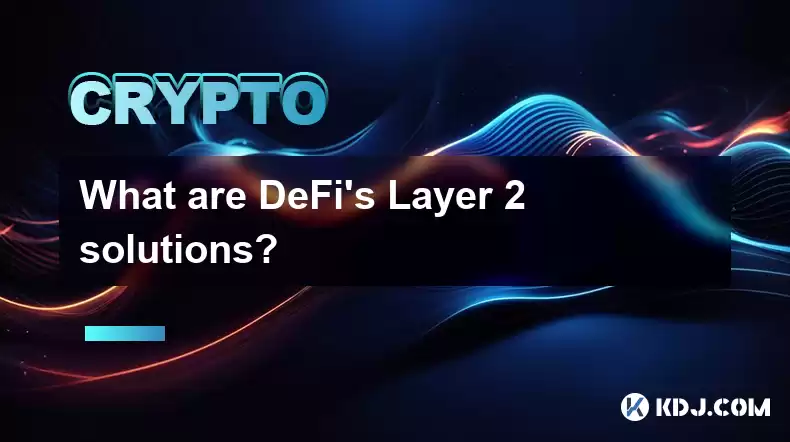
Key Points
- Definition of DeFi Layer 2 Solutions
- Benefits of Implementing DeFi Layer 2 Solutions
- Challenges Faced by DeFi Layer 2 Solutions
- Promising DeFi Layer 2 Solutions
- Future of DeFi Layer 2 Solutions
What are DeFi Layer 2 Solutions?
DeFi, or decentralized finance, has become a popular alternative to traditional financial systems due to its decentralized, transparent, and accessible nature. However, as DeFi protocols gain traction, the Ethereum blockchain, on which many of them are built, has faced challenges with scalability, high transaction fees, and network congestion.
Layer 2 solutions provide a potential solution to these challenges by scaling DeFi protocols and transactions off the Ethereum main chain. By doing so, Layer 2 solutions improve transaction speed, reduce costs, and enhance overall user experience.
Layer 2 solutions operate on top of the Ethereum main chain, essentially creating new networks that can process transactions independently. They connect back to the main chain at regular intervals to confirm and settle transactions, ensuring the validity and security of the transactions.
Benefits of Implementing DeFi Layer 2 Solutions
- Increased Scalability: Layer 2 solutions significantly increase the transaction capacity of DeFi protocols, allowing for a higher number of transactions to be processed per second. This eliminates network congestion and ensures faster execution of transactions.
- Reduced Transaction Fees: As the transactions are processed off-chain, Layer 2 solutions reduce the computational load on the Ethereum main chain. This reduction in computational requirements translates into substantially lower transaction fees.
- Improved User Experience: The combination of faster transaction speeds and lower fees enhances the overall user experience, making it more convenient and accessible for users to interact with DeFi protocols.
- Ethereum Interoperability: Layer 2 solutions remain compatible with the Ethereum ecosystem, allowing users to interact with their assets and protocols seamlessly. The transactions completed on Layer 2 solutions are eventually settled on the Ethereum main chain, ensuring the immutability of transactions.
Challenges Faced by DeFi Layer 2 Solutions
- Security Risks: While Layer 2 solutions improve scalability, they introduce new security considerations. The security of the overall system depends on certain mechanisms that may be vulnerable to exploits or malicious actors.
- Interoperability and Fragmentation: With the emergence of multiple Layer 2 solutions, ensuring interoperability between different protocols and maintaining a seamless user experience across different networks can pose challenges.
- Adoption and Education: Despite their potential benefits, the adoption of Layer 2 solutions may be hindered by a lack of understanding, technical complexities, and the need for user education in the broader DeFi community.
Promising DeFi Layer 2 Solutions
- Optimistic Rollups: Optimistic rollups rely on fraud proofs to challenge and finalize transactions. They process the transactions off-chain and record them as a succinct proof on the Ethereum main chain.
- Zero-Knowledge Rollups: Zero-knowledge rollups employ advanced cryptographic techniques to generate validity proofs for transactions. These proofs are much smaller than the actual transaction data, significantly reducing the data stored on the Ethereum main chain.
- Plasma: Plasma is a scalable framework that uses a tree-like structure to create off-chain networks. It allows for the execution of smart contracts within its own chain, further improving scalability.
- Polygon: Polygon is a Layer 2 sidechain that runs parallel to the Ethereum main chain. It uses a Proof-of-Stake (PoS) consensus mechanism and offers high throughput and reduced transaction fees.
Future of DeFi Layer 2 Solutions
The future of DeFi Layer 2 solutions appears promising as they strive to address the scalability limitations faced by DeFi protocols on the Ethereum blockchain. Ongoing developments in technology, security enhancements, and user experience improvements are expected to drive adoption and wider acceptance of Layer 2 solutions. They will play a significant role in shaping the future of DeFi, enabling increased scalability, cost-effectiveness, and user adoption.
Disclaimer:info@kdj.com
The information provided is not trading advice. kdj.com does not assume any responsibility for any investments made based on the information provided in this article. Cryptocurrencies are highly volatile and it is highly recommended that you invest with caution after thorough research!
If you believe that the content used on this website infringes your copyright, please contact us immediately (info@kdj.com) and we will delete it promptly.
- BlockDAG, DOGE, HYPE Sponsorship: Crypto Trends Shaping 2025
- 2025-10-01 00:25:13
- Deutsche Börse and Circle: A StableCoin Adoption Powerhouse in Europe
- 2025-10-01 00:25:13
- BlockDAG's Presale Buzz: Is It the Crypto to Watch in October 2025?
- 2025-10-01 00:30:13
- Bitcoin, Crypto, and IQ: When Genius Meets Digital Gold?
- 2025-10-01 00:30:13
- Stablecoins, American Innovation, and Wallet Tokens: The Next Frontier
- 2025-10-01 00:35:12
- NBU, Coins, and Crypto in Ukraine: A New Yorker's Take
- 2025-10-01 00:45:14
Related knowledge

How to track DeFi activity on a block explorer
Sep 04,2025 at 05:36pm
Bitcoin's Role in Decentralized Finance1. Bitcoin remains the cornerstone of the cryptocurrency ecosystem, serving as both a store of value and a benc...
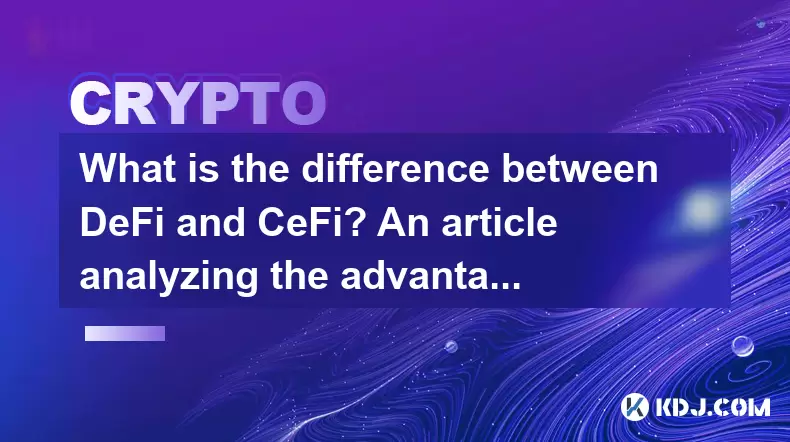
What is the difference between DeFi and CeFi? An article analyzing the advantages and disadvantages of both
Jun 13,2025 at 03:57am
Understanding the Foundations of DeFi and CeFiTo fully grasp the difference between DeFi (Decentralized Finance) and CeFi (Centralized Finance), it’s ...
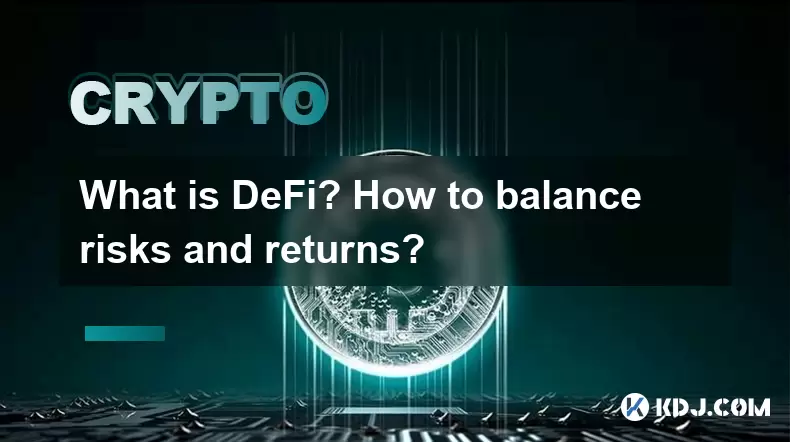
What is DeFi? How to balance risks and returns?
May 31,2025 at 12:22pm
What is DeFi? How to Balance Risks and Returns? Decentralized Finance, commonly known as DeFi, represents a revolutionary shift in the financial ecosy...
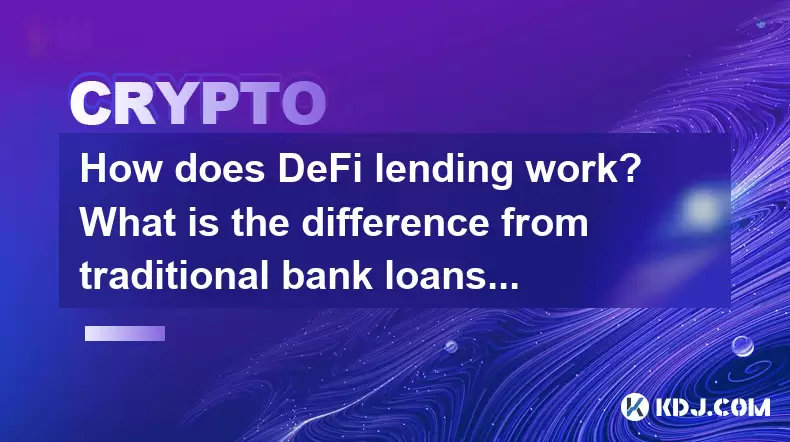
How does DeFi lending work? What is the difference from traditional bank loans?
May 29,2025 at 05:36pm
Introduction to DeFi LendingDeFi lending, or decentralized finance lending, represents a revolutionary shift in the way borrowing and lending are cond...
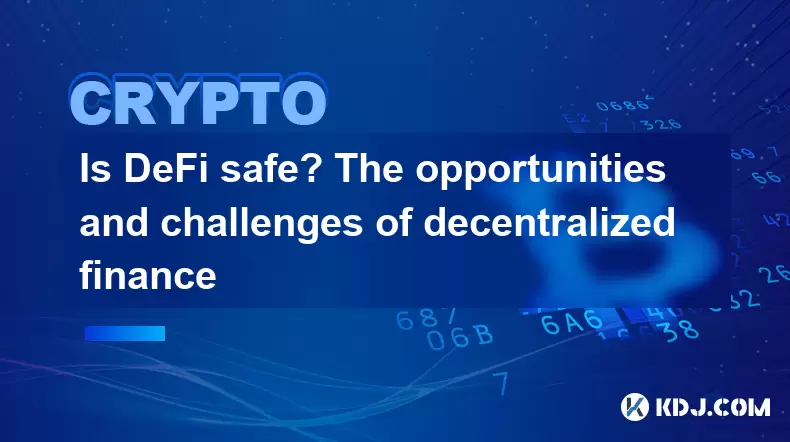
Is DeFi safe? The opportunities and challenges of decentralized finance
May 27,2025 at 02:28pm
Decentralized Finance, commonly known as DeFi, has revolutionized the financial landscape by offering a range of financial services without the need f...
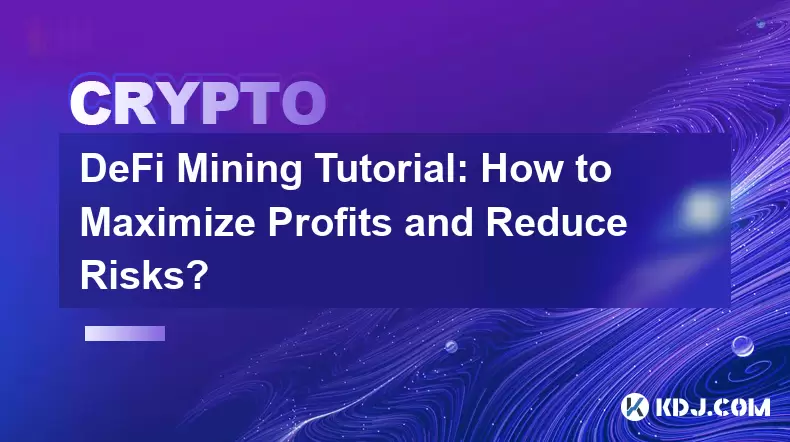
DeFi Mining Tutorial: How to Maximize Profits and Reduce Risks?
May 27,2025 at 07:42am
DeFi, or Decentralized Finance, has opened up a new world of opportunities for crypto enthusiasts looking to maximize their profits through various mi...

How to track DeFi activity on a block explorer
Sep 04,2025 at 05:36pm
Bitcoin's Role in Decentralized Finance1. Bitcoin remains the cornerstone of the cryptocurrency ecosystem, serving as both a store of value and a benc...

What is the difference between DeFi and CeFi? An article analyzing the advantages and disadvantages of both
Jun 13,2025 at 03:57am
Understanding the Foundations of DeFi and CeFiTo fully grasp the difference between DeFi (Decentralized Finance) and CeFi (Centralized Finance), it’s ...

What is DeFi? How to balance risks and returns?
May 31,2025 at 12:22pm
What is DeFi? How to Balance Risks and Returns? Decentralized Finance, commonly known as DeFi, represents a revolutionary shift in the financial ecosy...

How does DeFi lending work? What is the difference from traditional bank loans?
May 29,2025 at 05:36pm
Introduction to DeFi LendingDeFi lending, or decentralized finance lending, represents a revolutionary shift in the way borrowing and lending are cond...

Is DeFi safe? The opportunities and challenges of decentralized finance
May 27,2025 at 02:28pm
Decentralized Finance, commonly known as DeFi, has revolutionized the financial landscape by offering a range of financial services without the need f...

DeFi Mining Tutorial: How to Maximize Profits and Reduce Risks?
May 27,2025 at 07:42am
DeFi, or Decentralized Finance, has opened up a new world of opportunities for crypto enthusiasts looking to maximize their profits through various mi...
See all articles





















